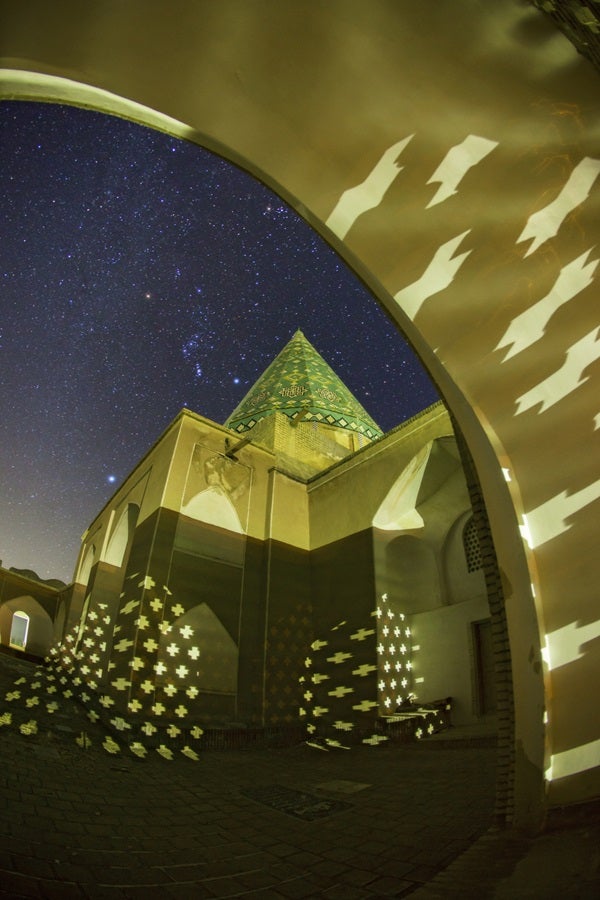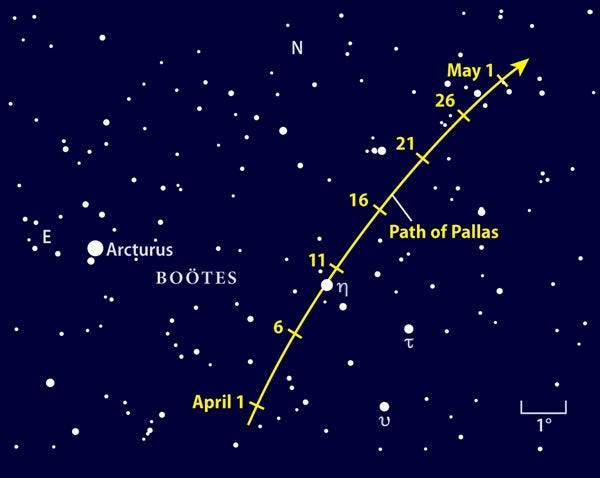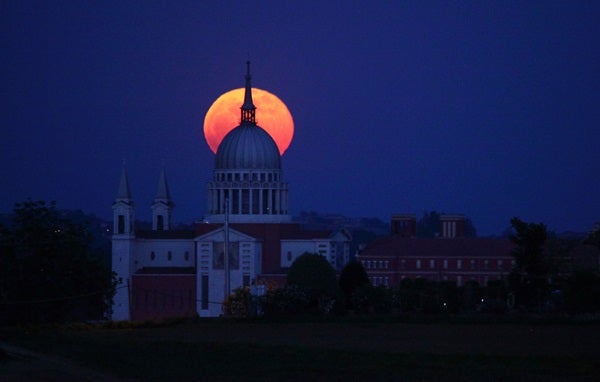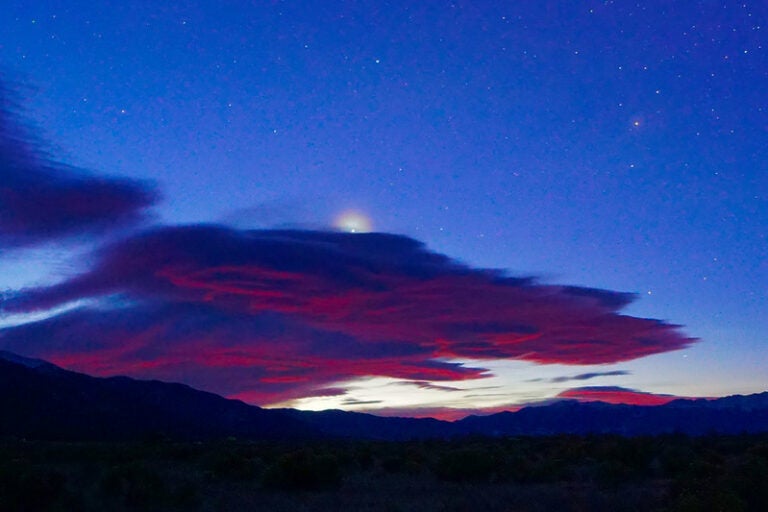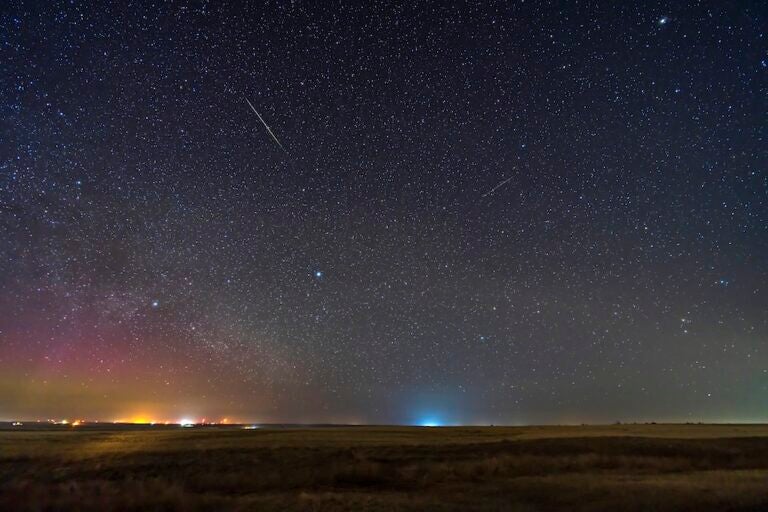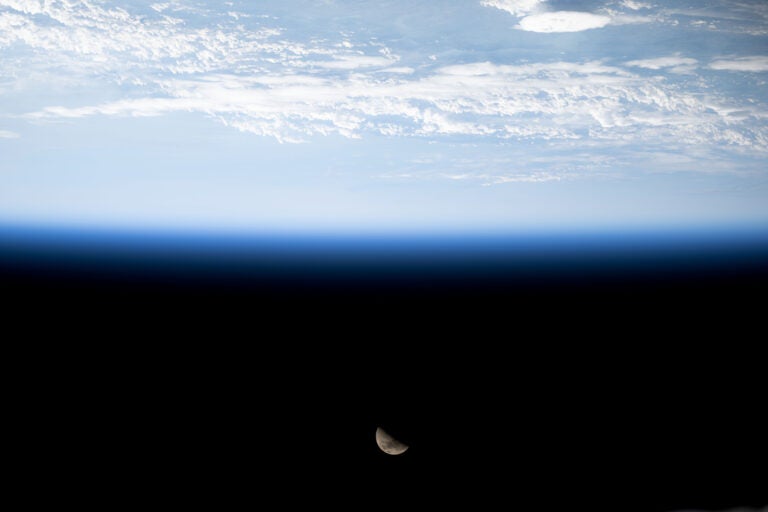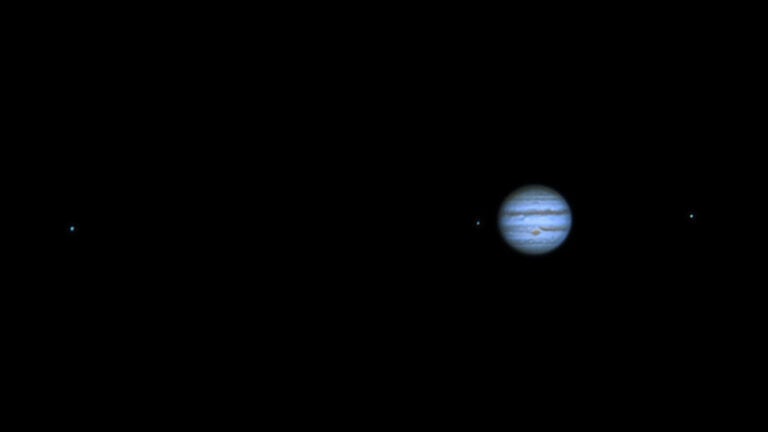First Quarter Moon arrives at 3:06 p.m. EDT. You can find the half-lit orb high in the southwest as darkness falls; it doesn’t set until nearly 3 a.m. local daylight time tomorrow morning. The Moon currently lies on the border between Gemini and Cancer, about 10° south of the Twins’ brightest stars, Castor and Pollux.
Saturday, April 13
Mercury lies low in the eastern sky before dawn all week. This morning, it appears some 4° high 30 minutes before sunrise. The innermost planet glows at magnitude 0.2 and should appear as an inconspicuous dot to the naked eye, but it stands out through binoculars. Use Venus, which shines brilliantly some 4° to Mercury’s upper right, as a guide.
Asteroid 2 Pallas reached opposition and peak visibility last week, but it remains a tempting target throughout April. Glowing at magnitude 7.9, the minor planet should be relatively easy to spot with binoculars and a cinch to see through a telescope of any size if you know where to look. And right now, the night sky’s fourth-brightest star points the way. Pallas lies 6° due west of Arcturus in Boötes the Herdsman, the brightest star in the eastern sky during late evening. The asteroid appears even closer to the magnitude 2.7 star Eta (η) Boötis, which stands 1.3° to the minor planet’s southeast tonight. Use the finder chart above to home in on Pallas on other nights this month.
Monday, April 15
The annual Lyrid meteor shower ramps up this week. Although the shower won’t peak until the morning of April 23, you should see a few meteors in the predawn hours before then despite the presence of a bright Moon. To tell a Lyrid from a sporadic meteor, trace the streak of light back to its origin. Lyrids appear to come from the constellation Lyra the Harp, while sporadics appear at random and can come from any direction.
Tuesday, April 16
Mars continues to add luster to Taurus the Bull this week. And this evening, the Red Planet passes 7° due north of the constellation’s brightest star, ruddy 1st-magnitude Aldebaran. Shining at magnitude 1.6, Mars appears slightly fainter than Aldebaran. The planet lies 30° above the western horizon an hour after sundown and doesn’t set until after 11 p.m. local daylight time.
The Moon reaches perigee, the closest point in its orbit around Earth, at 6:05 p.m. EDT. It then lies 226,306 miles (364,205 kilometers) away from us.
Wednesday, April 17
Venus pokes above the eastern horizon about an hour before sunrise. The brilliant planet dominates the predawn sky as the rosy glow heralding the Sun’s arrival grows brighter. Venus shines at magnitude –3.9, nearly four times brighter than the second-brightest planet, Jupiter. When viewed through a telescope, the inner world shows a disk that spans 12″ and appears 85 percent lit.
Full Moon arrives at 7:12 a.m. EDT tomorrow morning, but it looks completely illuminated throughout the night. It rises in the east shortly before the Sun sets this evening and reaches its peak in the south around 1 a.m. local daylight time. The Full Moon lies in Virgo, about one binocular field northeast of that constellation’s brightest star, 1st-magnitude Spica.
Friday, April 19
Jupiter continues to grow more prominent before dawn. The giant planet rises shortly after midnight local daylight time and climbs nearly 30° high in the south as twilight starts to paint the sky. It also shines at magnitude –2.4, making it the brightest point of light in the sky until Venus rises during twilight. A telescope reveals at least two conspicuous cloud belts on Jupiter’s 42″-diameter disk and the four bright Galilean moons.
Saturday, April 20
Look west after the last vestiges of twilight fade away and you’ll witness the beginning of the winter sky’s decline. By 9:30 p.m. local daylight time, the lower tier of bright winter stars and constellations barely clears the horizon. From mid-northern latitudes, Sirius in Canis Major, Aldebaran in Taurus, and the three belt stars of Orion the Hunter all stand about 10° high. (Ten degrees is the approximate width of your closed fist when held at arm’s length.) Still, a higher tier of winter stars remains prominent. Look for Capella in Auriga, Castor and Pollux in Gemini, and Procyon in Canis Minor to keep the cold season on our minds — and in the sky — for several weeks to come.
Sunday, April 21
Saturn grows more conspicuous in the morning sky with each passing week. The ringed planet rises before 2 a.m. local daylight time and climbs 20° above the southeastern horizon by the time twilight begins. Saturn shines at magnitude 0.5 and appears significantly brighter than any of the background stars in its host constellation, Sagittarius the Archer. A telescope shows the gas giant’s 17″-diameter disk and a stunning ring system that spans 38″ and tilts 23° to our line of sight.

